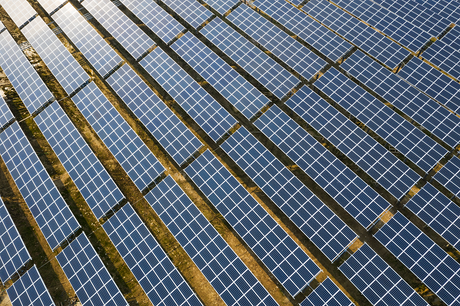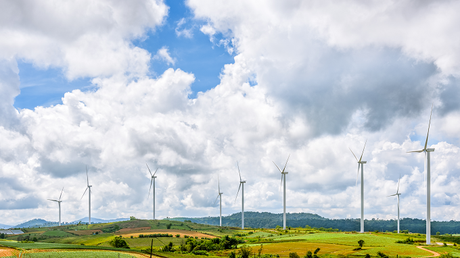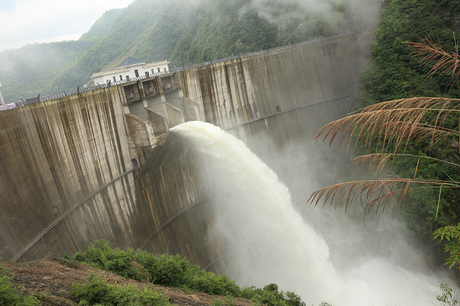Energy Predictions:
The World Will Need
Double the Power by 2050
With populations around the world increasing and an ever-growing demand for renewable energy, it’s tough to predict what each country, and the world as a whole, will need to keep the lights on. Energy Controls takes a look at some of the most prominent theories about how much power will be required decades from now, as well as some current solutions being presented to achieve these requirements.
It’s no secret that the world’s need for power is increasing by the year, what with the world population steadily growing to unprecedented heights. It’s been said that the current population, 7.7 billion at the time of writing, equates roughly to half the humans that have ever existed, and when you combine that with the fact that we’re more technologically advanced than ever, it makes sense that an insane amount of power is needed to fulfill the wants and needs of the world.

Rough numbers register that the world population increases approximately by 98,000 every single day, and the PwC has predicted that country by country, some nations could increase in population by as much as 5% in the next few decades. Due to this staggering increase in population, and thus the sharp increase in the need for power, The United Nations has declared that equally big changes need to be made.
The United Nation Secretary General, António Guterres, wrote to all of the heads of states, asking for their plans on how to achieve net-zero emission by 2050. This ties in with energy usage and predicted requirements too, as many heads of state have expressed their willingness, or current plans, for adhering to total reliance on green, renewable energy.
For example, both Britain and Spain have pledged to, or at least discussed plans for, running entirely on 100% renewable energy, with such notable figureheads as Good Energy’s CEO, Juliet Davenport, mapping out plans and pathways for how to convert entirely to renewable energy, as well as the Spanish social democratic government committing to installing 3,000MW of wind & solar power capacity every year for the next decade, at the very least.
Individual efforts by separate countries showcase to the world that adopting a more eco-friendly approach to energy usage is the right way forward. The Chief Executive of the European Climate Foundation, Laurence Tubiana, described Spain’s approach to renewable energy as inspirations, stating: “By planning on going carbon neutral, Spain shows that the battle against climate change is deadly serious.” However, it’s vital to remember why each individual nation requires energy to be able to predict power requirements.
One such example of specific energy requirements is the growth of transportation, with McKinsey, a company that focuses on working with organisations in order to predict radical changes to markets & industries, predicting that rapidly developing nations like China and India will require twice as much electricity for transport; accounting for 71% of the world’s new capacity. McKinsey also states that it’s inevitable that global demand will increase for energy, albeit at a slower growth than the last few decades, due in part to a greater focus on energy efficiency as well as a slower economic growth than that of the growth experienced between 2000 to 2015.
Despite being a relatively slow growth, it is still substantial due to its relation to a growing population of an estimated additional 1.5 billion people in the world by 2035, and large increases like this will also bring about its own problems. Although the focus will be on renewable energy, predictions of energy-related greenhouse-gas emissions rising are still very likely, with some stating that there will be a 14% rise in the next 20 years. It’s not all doom and gloom though, as these same predictions state that around 2035 these emissions will come to a summit before ultimately falling, due in large part to the likely embracing of electric cars & trucks.

Of course, the growth of various nations will catapult the need for energy even more so, with PwC estimating that by 2050 both China and India will both pass the United States as the wealthiest, most productive nations in the world. It’s thanks to these rapid developments that the need for conventional energy will persist for years and decades to come, with many predicting that fossil fuels will still dominate the energy industry all the way through to 2050.
The reliance of fossil fuel will simply be due to the massive investments that have been made into it historically; with a superior energy intensity and reliability. However, this doesn’t mean that eco-friendly, green, renewable energy won’t have its day, as these same predictions forecast massive mix-ups in how fossil fuels are utilised and relied upon. The likes of coal and fossil fuels (specifically petrol, diesel, crude oil, etc) are predicted to decline after their peak in 2025, lowering from 41% to 16% and 66% to 38% respectively, whereas natural gas will likely increase.
These gaps in the market will encourage and require renewable energy to step in and meet the needs of the world’s growing energy usage. The U.S. Energy Information Administration (the EIA) predicts that there will be a sharp increase in renewable energy created between 2010 and 2050, with some figures showing that the current average of 15% of all global energy being renewable will shoot up to 28% by 2050, pushing down alternative energies like petroleum from 32% to 27% and coal from 26% to 20%.
With correlating market growth, energy creation methods and general population increases, overall predictions do suggest that global energy requirements will grow almost double-fold. The EIA released their findings in September 2019, showcasing how a gigantic increase in Asian development will see Asia spearheading the need for energy in the next few decades.

Measured in quadrillion British thermal units, the EIA showed that when combined, all OECD (Organisation for Economic Cooperation and Development) allied countries, including the United States, the United Kingdom and 34 other countries, used approximately 230 quadrillion British thermal units in 2010 and will require approximately 280 quadrillion British thermal units in 2050. This is nothing compared to Asia though, as Asia used approximately 140 quadrillion British thermal units in 2010 and are predicted to need an astonishing 400 quadrillion British thermal units by 2050.
These statistics ranged from a rough estimation of approximately 540 quadrillion British thermal units globally in 2010, with a requirement of over 900 quadrillion British thermal units in 2050. The silver lining to this almost dizzying increase to energy requirements is that, more and more, it will be renewable energy, suggesting that although the future might not be too bright, it’s certainly green.

